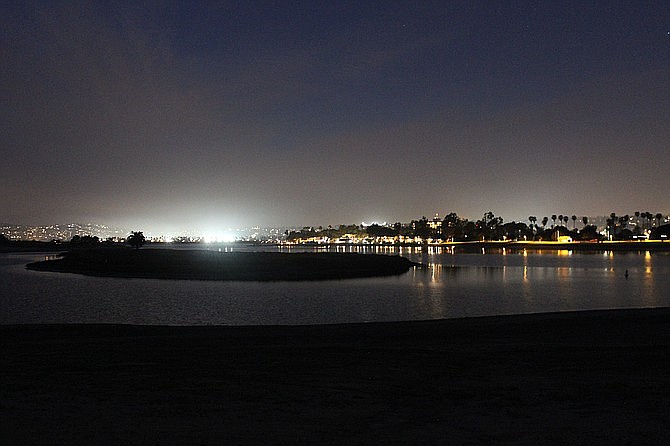 Facebook
Facebook
 X
X
 Instagram
Instagram
 TikTok
TikTok
 Youtube
Youtube

Poinsettias, a favorite of backyard gardeners, are now exhibiting their scarlet, petal-like bracts, just in time for the holidays. The onset of 14-hour-long nights triggers their behavior: In San Diego this condition is met just before the date of winter solstice — December 21.

Winter Solstice, the moment when the sun reaches its southernmost point on the celestial sphere, occurs this year at 7:59 a.m., Tuesday, December 21. This event signals the beginning of winter in the Northern Hemisphere and the beginning of summer in the Southern Hemisphere. With only about ten hours of daylight, San Diego must endure its darkest and gloomiest nights this week and next. During the day, the sun struggles to an altitude of only 34 degrees (as seen from San Diego), and then quickly sinks toward the horizon.
Have you ever watched a Sirius-rise? Find an open view right down to the east-southeast horizon. Watch there for Sirius to come up about two fists at arm’s length below Orion’s vertical Belt. Sirius rises sometime around 8 p.m. now depending on your location.
About 15 minutes before Sirius-rise, a lesser star comes up barely to the right of there: Beta Canis Majoris or Mirzam, a name that means “The Announcer.” What Mirzam announces is Sirius. You’re not likely to mistake the two; the second-magnitude Announcer is only a twentieth as bright as the King of Stars about to make his entry.
When a star is very low it tends to twinkle slowly, often in vivid colors. Sirius is bright enough to show these effects well, especially with binoculars.
The above comes from the Outdoors listings in the Reader compiled by Jerry Schad, author of Afoot & Afield in San Diego County. Schad died in 2011. Planet information from SkyandTelescope.org.


Poinsettias, a favorite of backyard gardeners, are now exhibiting their scarlet, petal-like bracts, just in time for the holidays. The onset of 14-hour-long nights triggers their behavior: In San Diego this condition is met just before the date of winter solstice — December 21.

Winter Solstice, the moment when the sun reaches its southernmost point on the celestial sphere, occurs this year at 7:59 a.m., Tuesday, December 21. This event signals the beginning of winter in the Northern Hemisphere and the beginning of summer in the Southern Hemisphere. With only about ten hours of daylight, San Diego must endure its darkest and gloomiest nights this week and next. During the day, the sun struggles to an altitude of only 34 degrees (as seen from San Diego), and then quickly sinks toward the horizon.
Have you ever watched a Sirius-rise? Find an open view right down to the east-southeast horizon. Watch there for Sirius to come up about two fists at arm’s length below Orion’s vertical Belt. Sirius rises sometime around 8 p.m. now depending on your location.
About 15 minutes before Sirius-rise, a lesser star comes up barely to the right of there: Beta Canis Majoris or Mirzam, a name that means “The Announcer.” What Mirzam announces is Sirius. You’re not likely to mistake the two; the second-magnitude Announcer is only a twentieth as bright as the King of Stars about to make his entry.
When a star is very low it tends to twinkle slowly, often in vivid colors. Sirius is bright enough to show these effects well, especially with binoculars.
The above comes from the Outdoors listings in the Reader compiled by Jerry Schad, author of Afoot & Afield in San Diego County. Schad died in 2011. Planet information from SkyandTelescope.org.
Comments